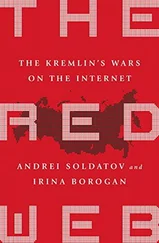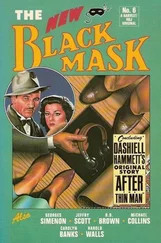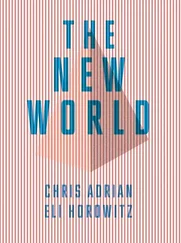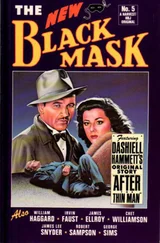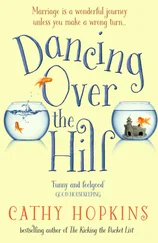Identifiers: LCCN 2020031373 (print) | LCCN 2020031374 (ebook) | ISBN 9781509538089 (hardback) | ISBN 9781509538096 (epub)
Subjects: LCSH: Schoenberg, Arnold, 1874-1951. | Music--History and criticism.
Classification: LCC B3199.A33 K7313 2021 (print) | LCC B3199.A33 (ebook) | DDC 780.9/04--dc23
LC record available at https://lccn.loc.gov/2020031373LC ebook record available at https://lccn.loc.gov/2020031374
The publisher has used its best endeavours to ensure that the URLs for external websites referred to in this book are correct and active at the time of going to press. However, the publisher has no responsibility for the websites and can make no guarantee that a site will remain live or that the content is or will remain appropriate.
Every effort has been made to trace all copyright holders, but if any have been overlooked the publisher will be pleased to include any necessary credits in any subsequent reprint or edition.
For further information on Polity, visit our website: politybooks.com
The Young Schoenberg (1955)
LECTURE 1
Schoenberg’s innovations already present in the early works – No laudatio temporis acti , but the question of the musical sense of every event – The concept of the young Schoenberg – The musical material – Three periods of the young Schoenberg – op. 1, ‘Abschied’ – Proximity to Debussy – Op. 2 songs and art nouveau – Richard Dehmel’s poem ‘Erwartung’ and Schoenberg’s op. 2, no. 1 – op. 2, no. 2, ‘Schenk mir deinen goldenen Kamm – Relationship with tonality – Basic characters – Analysis of op. 2, no. 2; harmony in early Schoenberg – Contrast with Wagner and Strauss – op. 2, no. 3, ‘Erhebung’; note-row technique – op. 2, no. 4, ‘Waldsonne’
LECTURE 2
Metric irregularity in Schoenberg: beginning of an analysis of Verklärte Nacht , op. 4 – Metric design and thematic progression – Duet idea; Adorno’s concept of ‘axial rotation’ (I) – Sequencing – Problematics of adagio movements – Relationship between development and exposition – Strauss’s Tod und Verklärung – Verklärte Nacht : new themes in the second part – Wagner’s leitmotifs – op. 3, no. 3, ‘Warnung’; precision – Verklärte Nacht as a transfer of the idea of the symphonic poem to chamber music, form and organization – comparison with the Chamber Symphony – Question from the audience about the arrangement for string orchestra – Gurrelieder part 1, first song and song of Tove
LECTURE 3
‘The Aging of the New Music’: misunderstandings and questions of musical sense – Gurrelieder , ‘So tanzen die Engel vor Gottes Thron nicht’ – Scale degree awareness and individual weight – Experiences from Webern’s op. 5 string quartet movements – Principle of balance in Waldemar’s song; innovations – Valéry’s concept of refus – The aspect of consistency in Schoenberg – The idea of the large interval: ‘Du wunderliche Tove’ – ‘Lied der Waldtaube’ – New harmony and counterpoint – End of Gurrelieder : chorus – Thematic combination as the origin of Schoenberg’s polyphony – Connection to Mahler – Clarity of musical events, the principle of construction – Thematic combination and note-row technique – Problem of tonality in the op. 6 songs
Schoenberg’s Counterpoint (1956)
LECTURE 1
Artistic idea and technique – The idea of integral composition, the intertwining of contrapuntal thinking and thematic work in Schoenberg – Melody in songs; primacy of counterpoint over polyphony, special status of choruses – The reawakening of the contrapuntal spirit – Counterpoint and harmony – Relation between the voices – Unity through simultaneity of voices; bindingness – Multiple counterpoint and musical space – Relationship of Schoenberg’s counterpoint to harmony – Rhythm – Instrumental texture – Relationship with form
LECTURE 2
Different types of counterpoint – Free counterpoint – Complementary counterpoint – Accompanying counterpoint – Contrapuntal invention of themes – Motivic fragmentation – Thematic combination – The counterpoint of opposing harmonic complexes – Schoenberg’s First String Quartet, op. 7; organization of large-scale form by contrapuntal means
LECTURE 3
Contrapuntal corner points; the ‘energetic’ idea of counterpoint; op. 7 (continued) – Interpretation and shaping – Relationship of two contrapuntal passages to each other – ‘Axial rotation’ (II) – The unification of relatively independent voices; determinate negation – Form as the result of counterpoint; op. 7 (conclusion) – Shortening and balance – op. 9 Chamber Symphony
LECTURE 4
Pierrot lunaire , transition to the twelve-note technique – The ‘roots’ of counterpoint: the need for polyphony and integration – Dodecaphonic counterpoint as a mediation of these aspects, unity within diversity – Model: ‘Der Mondfleck’ from Pierrot lunaire ; the transition to the twelve-note technique as an ‘organic necessity’
Criteria of New Music (1957)
LECTURE 1
Method – Fixed values or relativism – The dialectical approach – Immanent critique – The concept of judgements of taste in Kant – The objectivity of aesthetic judgements and the immanent ‘correctness’ of the matter – Against pluralism of aesthetic judgement – The attitude of musical historicism – How can one actually formulate the question of the musical criterion? – Aesthetic questions are technical questions, questions of procedure – Once again: ‘The Aging of the New Music’, the dialectic of the progress of artistic rationality – The relationship between science and art; aesthetic necessity and ‘effect without cause’
LECTURE 2
Critique of definition, the concept of musical sense – The concept of the development – Misunderstandings of the concept of musical sense, the so-called poetic idea – Problematics of categories of sense, Dilthey – Sense and senselessness historically mediated – Discussion with Eduard Steuermann about the Leonore Overtures , the stringency of the work of art – Discussion: can there be several solutions to a problem? – Discussion about Hindemith – Discussion about Schoenberg’s supposed calculation errors in Accompanying Music for a Film Scene – Conversation about it with Gertrud Schoenberg – Spiritual content and subjective reception – The concept of musical material – Discussion with Erich Doflein about the polemic against Hindemith
LECTURE 3
The question of musical quality, the formal level – Primitivity and complexity; inadequacy of technical categories – Craft and control over material – The danger of entire layers of composition withering away through a fixation on craft – Pierre Boulez, new characters and technical correlates – Originality – Misconceptions about originality – The intensification of the problem: the aim of uniqueness today – Convention and expression; reception of the twelve-note technique – Discussion about the problem of stylistic inconsistency
LECTURE 4
Musical character; danger of rationalization and quantification – Preservation of characters in Boulez and Stockhausen – Two approaches to composition: symphonic type and character-piece type – Schoenberg: the concept of gestalt – Totality – Pointing beyond the gestalt; progression over time – Determination and function – Insistence on the full functional crafting of every detail – The criterion of formal level: abundance of forms – Clarity – The concept of development, musical time – Irreversibility of time – Simultaneity of memory and expectation; balance and homeostasis in Schoenberg
Читать дальше

